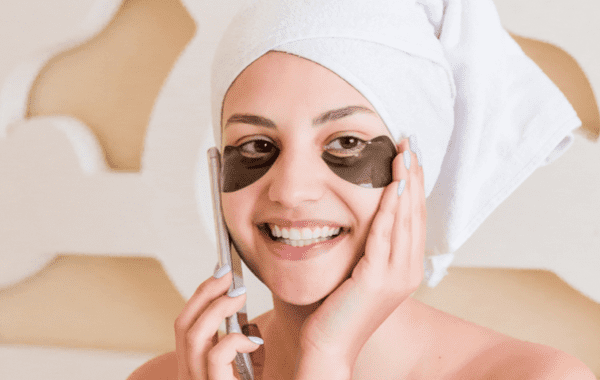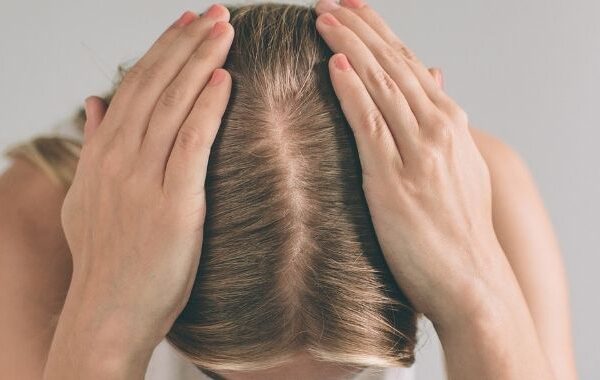It is possible to prevent and treat acne with natural skin care!
First things first: Prevention. What you need to know to keep your skin healthy
The Importance of Hydration

Good hydration, seeks to maintain the outer layer of the skin with enough water, regardless of the conditions of the environment. To fulfill this purpose, the skin takes water and lipids from the air and external tissues and secures them to its surface, in order to stay soft, elastic and flexible.
When you manage to keep your skin healthy, it maintains good levels of moisture, while if the amount of water on the skin is reduced, the skin stops working properly, and this is where its ability to protect us from substances and microorganisms is degraded.
The Desquamation Process
Nature is so wise, that the outer layer of our skin is made up of dead cells called corneocytes. Since our cells are approximately 80% water, if a living cell is exposed to air, which is composed of only 1% moisture, it would dry out and die. For this reason, our organism has arranged millions of dead cells on the outside that protect us from the environment.
Approximately every thirty days, living cells, called keratinocytes, degrade as they pass through the different layers of the skin, until they reach the outside converted into dead cells called corneocytes.

Why does pH matter when it comes to preventing or treating acne?

PH is a very important factor when it comes to maintaining a healthy skin.
The “acidic mantle” is an essential part of the skin’s immunological system. Its name comes from the fact that it is responsible of maintaining an acidic pH (between 4.5 and 5.5) the skin, thus creating an environment in which bacteria and micro-organisms find it difficult to survive.
When the skin becomes alkaline, the activity of certain bacteria is amplified, resulting in a degradation of the skin barrier, leaving it exposed to possible infections caused by microorganisms (including acne).
Now, let's get into it. What is acne? How to prevent or treat acne?
Different types of acne

Comedones
Pustule and Papule
The Most Common Causes of Acne

There is no single cause for acne to occur, and worse, several of its causes are related to the nature of our skin and therefore are not necessarily under our control. However, I suggest you focus your attention on those you can control. Here they go!
Causes that are NOT under your control
- Oily type of skin. Given the over-production of sebum that characterizes this type of skin, it is the one that is most exposed to the formation of comedones that leads to acne
Your Daily Cleansing Routine to Prevent or Treat Acne
Now that we know the causes acne and what to do in order to keep our skin healthy, let’s focus on the three main points that will allow you to prevent, control and cure acne naturally: moisturize properly, reduce sebum production and adopt a cleansing habit suitable for your skin.
Your daily steps
Step 1: Prepare Your Skin

We could also call this step Pre-Cleaning. In this, you perform an initial cleaning with an oil-based cleaner. Yes, you read that right. Oil Based.
When we cleanse the skin, we seek to remove impurities. These can be traces of makeup, sunscreen, pollution, sebum, among others. Some of these microparticles are water soluble and others are oil soluble and if not properly removed, they can cover pores and cause acne.
As we know, equals attract. Oil attracts oil and water attracts water, however water and oil are repelled. Oily cleaners form an emulsion with oil-soluble dirt which can be washed quickly with the following cleaning steps.
Why should I do a pre-cleaning step?
Mode of Use
What kind of oils should I use to cleanse my skin?
The best non-comedogenic oils to care for skin prone to acne
| Aceite Vegetal | Nombre INCI | Beneficios |
| Aceite de Ricino o Castor Oil | Ricinus communis (Castor) Seed Oil | Es el aceite limpiador por excelencia, ya que crea una polaridad en la piel, que atrae y disuelve rápidamente las impurezas |
| Aceite de Jojoba | Simmondsia Chinensis (Jojoba) Seed Oil | Posee ácidos grasos parecidos a los de la piel, por lo que sus propiedades se mimetizan y se absorben rápidamente. Tiene propiedades desinflamatorias, humectantes, y antimicrobianas |
| Aceite de Camelia | Camellia Oleifera Seed Oil | Es un aceite ligero, con una composición de ácidos grasos que poseen un efecto anti-oxidante y anti-inflamatorio |
| Aceite de Rosa Mosqueta | Rosa Canina Fruit Oil | Excelente fuente de Vitamina C, que brinda un efecto antioxidante (remueve células muertas). Promueve la regeneración celular |
| Aceite de Onagra | Oenothera Biennis (Evening Primrose) | Es un aceite rico en ácido linoleico lo que lo hace excelente para ser utilizado en las pieles con acné, gracias a sus propiedades antioxidantes y regeneradoras. |
Other light oils that can be used to macerate herbal properties may be:piperite grape oil, sunflower oil, almond oil.
What kind of oils should I avoid putting on my face?
Vegetable Oils with High Comedogenic Index
Step 2: Clean
Choosing the right cleanser for oily, acne-prone skin

- Should be moisturizing, gel-based and water-based
- You must have a pH balance between 4.5 and 5.5
- It should be designed for your skin typeIt must meet these 3 conditions as well as it must be formulated for the type of acne you want to treat
Treatment for comedone is different than treatment for inflammatory acne. Basically, although the 5-step routine applies to prevent or treat acne of any kind, they could apply different ingredients depending on the specific needs of each skin.
Cleaning Tips
The cleansing MYTHS you should leave in the past if you want to prevent or treat acne
Forget the astringents
It is normal to see suggested products to prevent or treat acne with the promise of being “astringent”, meaning that they absorb skin fat, giving the feeling of freshness and sebum reduction.
Astringent cosmetics achieve this property because alcohol has been added to its formula, and although the feeling they provide can attract people who, like me, have oily skin, the continuous use of alcohol on the skin, causes dehydration which deteriorates the skin barrier, and creates a vicious cycle in our body.

causes dehydration which deteriorates the skin barrier, and creates a vicious cycle in our body.
Stay away from the sulfates
When we use a cleaning product, it has in its formula a surfactant. This is the ingredient that makes the detergent effect, taking the impurities that we want to remove from our skin.
For many years, “sulfates” were the surfactant ingredient par excellence. However, several studies have listed them as irritants not only for the skin, but also for the eyes and lungs. Being fair, there are also natural surfactants that produce the same effect.

How to recognize if my products have sulfates?
Soap on the face? Thanks but I pass
I confess. I love seeing handcrafted soaps! I love to see the variety of colors, their organic packaging (or non-packaging), the variety of ingredients. However, when it comes to using them on my face, I avoid it and I want to tell you why.
For a product to be called soap, its pH must be above 8. Already in the first part of this article I told you a little about the importance of maintaining an acidic pH on the skin (between 4.7 and 5.5) especially people who want to prevent or treat acne.

This study (page 3) demonstrates that the continued use of soap-based cleaners increased microbial action, while it was reduced after prolonged use of acidic pH cleaners.
Exfoliation myths
We’ve already seen that acne forms because some dead cells left in our skin are joined with sebum to form the comedon.
This concept, while true, has led us to adopt the false belief that we need to exfoliate the skin frequently, to get rid of these annoying granites.

Don’t get me wrong. Exfoliation is necessary, but you should be careful with the frequency. Once a week it’s ideal. More than that can end up affecting your skin, and cause the much-unwanted dehydration we’ve been talking about.
Choosing a product because it smells good
It has happened to you that there are so many options and not knowing which one to choose, you choose your product based on the aroma?
It’s normal. The aromas connect us with our memories and activate emotions. However, if you’re looking to prevent or treat acne, ideally, choose a fragrance-free product.
You identify the fragrance on the label as “Parfum” or “Fragrance”. However, this word does not comprise a single ingredient. In contrast, it can encompass more than 200 ingredients that you don’t have any visibility about and that also tend make your skin more sensitive.

Fragrances are usually alcohol-based and this is why they can be so irritating. In the “astringents” section I told you about the harmful effects that alcohol has on your skin. That’s why choose products that are “Fragrance Free”.
Step 3: Hydrate
How to recognize if my products have sulfates?

Step 4: Treat
This is the part of the routine where you use specific creams or natural treatments to fight acne. It is not always separate from the above steps, but when we talk about treating, it refers to using cleaning products (Step 2) and hydration (Step 3) that contain specific ingredients to prevent or treat acne, which will depend on the type of acne or the type of skin.
Ingredients to prevent or treat acne
Step 5: Protect
It’s the last step and basically consists of:
- Use sunscreen every day: Choose one that gives you good protection with a light sensation
- Strengthen hydration: Applying a mask at least once a week.
And well we’ve reached the end of our article, I hope it’s been of use to you, and now you have many more tools to prevent or treat acne with natural ingredients.
If so, I ask you to leave me your comments, or help me share it!






